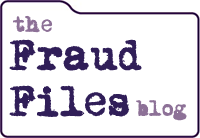Another letter opposing the FTC’s Business Opportunity Rule was submitted by MLM attorney Gerry Nehra. His problem in this letter? The fact that there are many companies that would have to comply with the rule and the FTC cited the wrong number! Why would it matter if there are 150 or 1,500 companies that are multi-level marketing schemes? If they need to be regulated, they need to be regulated, no matter how many there are!
Business Opportunity Rule, Matter No. R511993
The underlying basis of this Proposed Rule is so flawed that I have to ask, “FTC—What were you thinking?” I have issues to bring up—many issues. Due to the 4000 character space limitation imposed on this form of submission, this is a one issue submission. My other issues will be in other submissions.
THE 150 MULTILEVEL COMPANIES ISSUE On Pages 78 and 79
“The proposed Rule is designed to streamline and reduce substantially the quantity of information required to be disclosed by business opportunity sellers. The proposals would impact sellers differently, depending upon whether they are currently covered by the Franchise Rule. The Commission staff estimates that there are approximately 3,200 business opportunity sellers, comprised of some 2,500 vending machine, rack display, and related opportunity sellers, 550 work-at-home opportunity sellers, and 150 multilevel marketing companies.”And on Page 83 “The staff estimates that there are approximately 3,200 business opportunity sellers, including some 2,500 vending machine, rack display, and related opportunity sellers; 550 work-at-home opportunity sellers; and 150 multilevel marketing companies.”
How can the Federal Trade Commission make the above statement—TWICE—that there are 150 multilevel marketing companies, when there are over 1,500 such companies? I have commitments of two industry experts who will help me name them in the appropriate forum.
How can the Federal Trade Commission miss this one by an order of magnitude—by a factor of ten? Today’s DSA-US website—www.dsa.org—lists 198 direct selling companies, with well over 150 of them having multilevel compensation. And only about one multilevel marketing company in ten is a member of the DSA. When the number is approximately 1,500, how can the 150 number be passed up to your superiors? How can you send the 150 number to the FTC Commissioners? How can the 150 number be sent to the Office of Management and Budget?
AND THE FEDERAL TRADE COMMISSION LEFT OUT A CATEGORY – There are many single level marketing companies out there – POSSIBLY HUNDREDS – and all of them will be affected by the proposed rule – but the Federal Trade Commission fails to recognize their existence. A quick and very simple definition of the two types of companies follow:
A single level direct selling company gives its independent contractor representatives one way to make money – sell products/services to customers. A multilevel direct selling company gives its independent contractor representatives two ways to make money – sell products/services to customers – and optionally – find more independent contractor representatives – and when they sell products/services to customers, you will receive an override commission.
Here is just one example of availability of data, somehow ignored by the Federal Trade Commission: – I spent 5 minutes on Google on 6/28/06 and came up with over 600 specifically named companies. This was before I found: http://www.npros.com/directory.asp 1 to 20 of 770 Companies
This underlying premise of this proposed rule – namely that there are 150 multilevel marketing companies – and the failure to even recognize the existence of single level marketing companies – is so flawed, so understated, so erroneous, that the only solution is to withdraw the proposed rule completely – and not put forth another version until the Federal Trade Commission understands and states with some reasonable semblance of accuracy, how many companies in these categories the proposed rule will affect.
Submitted by: Gerald P. Nehra Attorney at Law



